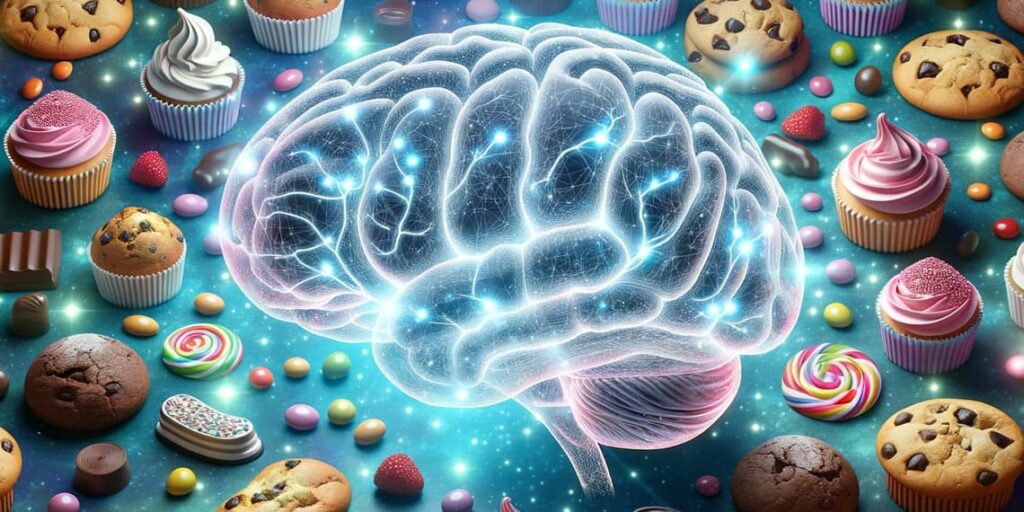Eating disorders, such as anorexia nervosa, bulimia nervosa, and binge-eating disorder, affect millions of people worldwide, but their underlying causes are complex and not fully understood. A recent study published in Neuropsychopharmacology has shed light on the relationship between the brain’s response to food expectation, anxiety traits, and eating disorders. This research could have important implications for the treatment of eating disorders and the development of more effective therapies.
Eating disorders are psychiatric conditions characterized by abnormal eating behaviors and body dissatisfaction. Anorexia nervosa involves severe food restriction and low body weight, bulimia nervosa includes regular binge-eating and purging, and binge-eating disorder features recurrent binge-eating episodes without compensatory behaviors. There is also a category known as Other Specified Feeding and Eating Disorders (OSFED), which includes disorders that do not meet the criteria for the specific categories mentioned above.
Individuals with eating disorders often share high levels of body dissatisfaction and a drive for thinness, as well as difficulties in managing strong emotional states like anxiety, sadness, or anger.
Previous studies have suggested that anxiety-related traits, including trait anxiety and harm avoidance, may be risk factors for developing eating disorders. Trait anxiety refers to a tendency to experience heightened levels of anxiety in various situations, while harm avoidance involves a heightened perception of environmental threats. These traits have been linked to various aspects of eating disorder psychopathology in previous research.
Neurobiological studies have also indicated that brain reward circuits play a crucial role in the development and maintenance of eating disorders. These circuits are involved in the processing of pleasurable experiences, including food consumption. Previous research has shown that individuals with eating disorders exhibit alterations in these reward circuits
“Researching the so-called brain reward circuits, our research has shown that individuals with eating disorders respond differently compared to controls in dopamine-related brain circuits,” said study author Guido K.W. Frank, a professor of psychiatry at the University of California San Diego and director of psychiatry at Rady Children’s Hospital San Diego.
“We also know that the cognitive emotional aspects of eating disorders, fear of weight again or eating, or body image issues are very similar across eating disorders and that a conditioned fear of caloric food is cutting across diagnoses. However, it has been unclear 1) what brain circuits are involved in expectation or fear of receiving a caloric food, 2) how expectation and outcome (actually receiving a caloric stimulus) interact, and 3) whether non-eating disorder related anxiety affects those circuits.”
“Especially the latter has been an important question to me as it has been striking to me that in the face of stress (such as school) the eating disorder often finds it way into people’s lives. When I had an outpatient clinic, each August several of my patients relapsed, a time when school starts and with that a great deal of stress for folks who already tend to be perfectionistic and anxious.”
The study involved 197 women with various types of eating disorders and 120 healthy control participants. To ensure data accuracy, participants underwent a series of assessments, including psychiatric diagnoses, anxiety evaluations, and measures related to eating disorder behaviors and attitudes.
Functional magnetic resonance imaging (fMRI) was used to measure brain activity while participants anticipated and received caloric and non-caloric taste stimuli. The researchers focused on specific brain regions, such as the amygdala, which plays a central role in processing expectation, vigilance, anxiety, and threat, as well as regions associated with reward processing.
Frank and his colleagues found that individuals with eating disorders exhibited elevated amygdala response when anticipating a high-calorie food stimulus compared to healthy controls. This heightened response in the amygdala suggests an increased sensitivity to the anticipation of caloric intake among individuals with eating disorders.
“In other words, the expectation of how a food or meal will turn out is a major driver of how people respond to actually receiving or eating that food,” Frank told PsyPost. “This is important because we can use psychotherapy or maybe other treatments to modify expectation. Furthermore, we need to pay attention to how we manage trait anxiety or anxious disposition as it likely affects all those processes.”
Trait anxiety had a significant impact on the relationship between amygdala response to expectation and brain response to sucrose receipt. There was an inverted-U shaped relationship, indicating that both low and very high trait anxiety levels were associated with lower amygdala response.
“There was an inverted-U shaped relationship between trait anxiety and brain response, so low amygdala response to low trait anxiety (likely low activation to begin with) but also to the very high end of trait anxiety (people were probably showing a certain level of ‘burn out’ after long high anxiety). This indicates that we may not be able find brain–behavior relationships in studies at times because we tend to look for linear relationships but those may not always exist,” Frank explained.
The study suggests that modifying the expectation of how a meal will turn out could be a promising target for therapy in individuals with eating disorders. Additionally, managing anxious traits may play a crucial role in improving the brain’s response to food-related stimuli.
While this study provides valuable insights, it also has limitations. The study primarily focused on women, and future research should explore how these findings apply to individuals of different genders. Additionally, the study’s findings are correlational, and further research is needed to establish causality and determine the most effective interventions for individuals with eating disorders.
“We need to figure out how to best treat those brain-behavior abnormalities to reduce distress,” Frank said.
The study, “Trait anxiety is associated with amygdala expectation and caloric taste receipt response across eating disorders“, was authored by Guido K. W. Frank, Megan E. Shott, Tamara Pryor, Skylar Swindle, Tyler Nguyen, and Joel Stoddard.

